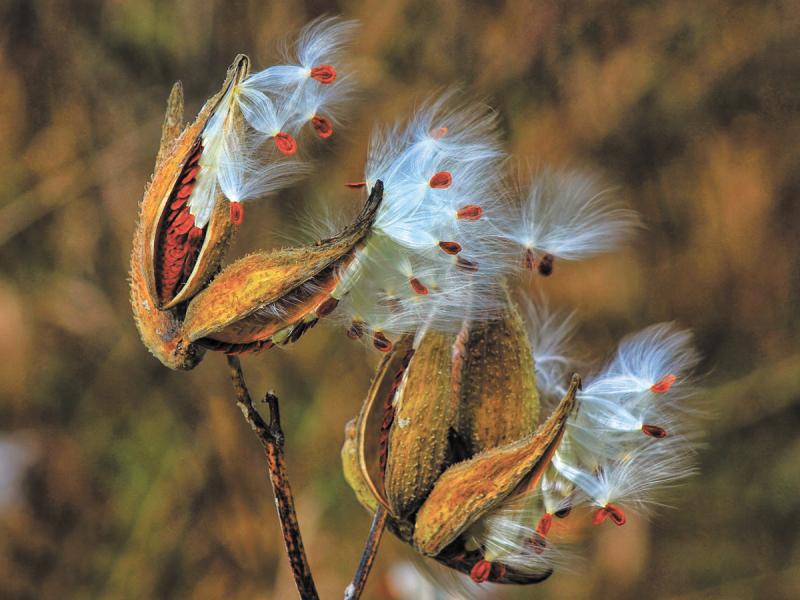From junk bonds to junk mail to junk food, it seems a lot of our lives deal with junk. “Junk” once meant old cable or rope that was cut up and used on ships for caulking. By the 1660s, junk came to mean discards from old ships, and finally, junk meant trash of all kinds.
A once-beautiful flowering plant that has run to seed can look rather junky, so since 1739, we Americans refer to something junky or shabby as “seedy.”
But seedy in the garden can be a good thing. As summer melts into fall, most annuals, if not deadheaded, will begin to form seeds from faded blossoms. In some cases these seeds are the reason we grew the plants in the first place: Sunflowers, dry beans, dent corn, flint corn and popcorn are all hardened and dried seeds. But if plants that we grow for leaves, such as lettuce, parsley or spinach, are triggered by summer heat or drought to bolt, that is, send up a flower stalk, it destroys the value of the leaves, which become bitter. The downside of letting these plants go to seed is that not only do they look seedy, they continue to draw nutrients and moisture out of the soil. An upside is that many of these flowering stalks will attract beneficial pollinators such as honeybees, moths and hummingbirds.
But just as one man's junk is anther's treasure, these bolted or spent plants can be composted and the bare ground planted with another crop. In the vegetable garden you can still plant lettuce, radishes, spinach and bush beans, and get a second harvest before the killing frosts of autumn. To help them stay cool during the remaining hot days, you should mulch the newly planted crops heavily.
Flowerbeds can look seedy after a few years, and August is a good time of year to dig up and divide overgrown clumps of coral bells (Heuchera americana), hostas, daylilies (Hemerocallis), bearded iris (Iris germanica) and oriental poppies (Papaver orientale).
Late summer is also a good time to prune hedges and shrubs. You can shear Christmas trees to shape them, and cut back any overgrown branches on evergreens such as fir trees and pine trees.
Another reason the garden may be a bit seedy in August is the hot weather that dries out the soil quickly. A few shallow-rooted plants such as strawberries may need a lighter daily watering, but most garden plants grow best when you give them one to two inches of water just once a week. Watering more often than once a week can encourage a shallow root system and overall weaker plants.
Applying one to two inches of water at one time soaks the soil and promotes deeper roots, which not only allow the plant to get nutrients from deep in the earth, but anchor the plant so it is less likely to fall over in the wind.
Giving plants too much water can literally drown them by clogging the roots’ pores and keeping them from taking in food or water, and the plant eventually dies. And then all your hard work turns to junk.




















































